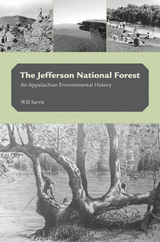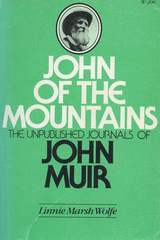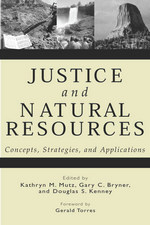3 start with J start with J

The highland forests of southwestern Virginia were a sacred land to Native Americans and one they relied upon for sustenance. After European contact, this beautiful country drew successive waves of settlers and visitors, and for a brief yet intense period, industrialists rapaciously exploited its timber resources, particularly in the higher elevations where the woodlands had survived the nearby valleys’ generations of agricultural use. This is the story of how various peoples have regarded this land over the centuries and how, starting in the early twentieth century, the federal government acquired 700,000 acres of it to create what is now the Jefferson National Forest (JNF).
Will Sarvis’s in-depth history explores the area’s significance to such native tribes as the Cherokee and Shawnee, for whom it functioned as a buffer zone in late prehistory, and its attraction for nineteenth-century romantics who, arriving in stagecoaches, became the area’s first tourists. Aggressive commercial logging gave way to the arrival of the U.S. Forest Service, which patched the JNF together through successive purchases of privately owned land and instituted a more regulated harvesting of various timber resources. Public support for Forest Service policy during the Depression and World War II was followed by controversies, including the use of eminent domain. In presenting this history, Sarvis probes the many complexities of land stewardship and, in analysis that is sure to spark debate, discusses how and why the JNF could abandon clear-cutting and return to traditional selective tree management.
An ongoing experiment in democratic land use, the JNF contains many lessons about our relationship with the natural environment. This book delineates those lessons in a clear and compelling narrative that will be of great interest to policy makers, activists, and indeed anyone drawn to American environmental history and Appalachian studies.

The sixty extant journals and numerous notes in this volume were written from 1867 to 1911. They start seven years after the time covered in The Story of My Boyhood and Youth, Muir’s uncompleted autobiography. The earlier journals capture the essence of the Sierra Nevada and Alaska landscapes. The changing appearance of the Sierras from Sequoia north and beyond the Yosemites enthralled Muir, and the first four years of the journals reveal his dominating concern with glacial action. The later notebooks reflect his changes over the years, showing a mellowing of spirit and a deep concern for human rights.
Like all his writings, the journals concentrate on his observations in the wilderness. His devotion to his family, his many warm friendships, and his many-sided public life are hardly mentioned. Very little is said about the quarter-century battle for national parks and forest reserves. The notebooks record, in language fuller and freer than his more formal writings, the depth of his love and transcendental feeling for the wilderness. The rich heritage of his native Scotland and the unconscious music of the poetry of Burns, Milton, and the King James Bible permeate the language of his poetic fancy.
In his later life, Muir attempted to sort out these journals and, at the request of friends, published a few extracts. A year after his death in 1914, his literary executor and biographer, William Frederick Badè, also published episodes from the journals. Linnie Marsh Wolfe set out to salvage the best of his writings still left unpublished in 1938 and has thus added to our understanding of the life and thought of a complex and fascinating American figure.

Just over two decades ago, research findings that environmentally hazardous facilities were more likely to be sited near poor and minority communities gave rise to the environmental justice movement. Yet inequitable distribution of the burdens of industrial facilities and pollution is only half of the problem; poor and minority communities are often denied the benefits of natural resources and can suffer disproportionate harm from decisions about their management and use.
Justice and Natural Resources is the first book devoted to exploring the concept of environmental justice in the realm of natural resources. Contributors consider how decisions about the management and use of natural resources can exacerbate social injustice and the problems of disadvantaged communities. Looking at issues that are predominantly rural and western -- many of them involving Indian reservations, public lands, and resource development activities -- it offers a new and more expansive view of environmental justice.
The book begins by delineating the key conceptual dimensions of environmental justice in the natural resource arena. Following the conceptual chapters are contributions that examine the application of environmental justice in natural resource decision-making. Chapters examine:
- how natural resource management can affect a range of stakeholders quite differently, distributing benefits to some and burdens to others
- the potential for using civil rights laws to address damage to natural and cultural resources
- the unique status of Native American environmental justice claims
- parallels between domestic and international environmental justice
- how authority under existing environmental law can be used by Federal regulators and communities to address a broad spectrum of environmental justice concerns
READERS
Browse our collection.
PUBLISHERS
See BiblioVault's publisher services.
STUDENT SERVICES
Files for college accessibility offices.
UChicago Accessibility Resources
home | accessibility | search | about | contact us
BiblioVault ® 2001 - 2024
The University of Chicago Press









